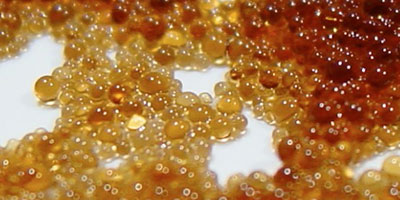Cleaning Procedures for Ion Exchange Resins
Like cleaning RO membranes, the cleaning or sanitizing solution should address the contaminant.
A suitable resin analysis by a qualified laboratory can be invaluable by narrowing down the problem and determining how extensive the damage may be. (It may also reveal some surprises!)
Once we know the foulant, we can select a cleaning agent. The most commonly used cleaning agents for various types of contamination are:
- Bacteria or Algae ---> Use Peracetic Acid or Sodium Hypochlorite
- Iron/Manganese ---> Use Hydrochloric Acid or Sodium Dithionite
- Organics ---> Use Brine (Sodium Chloride) or Brine/Caustic
- Oil ---> Use Non-Ionic Surfactant and Caustic
Of course, it is critical that the temperature, concentration of the chemical being applied, and exposure time be carefully controlled during the process to prevent damage to the resin.
Even with the best pretreatment, there are always hiccups. As a result, your demineralizer resin may be fouled but not badly enough to require the expense and manpower necessary to replace it. There are resin cleanup procedures available for a wide variety of contaminants; these generally involve exhausting the resin, treating it with the appropriate chemical product to remove the contaminant from the resin, rinsing the !$@#%*# out of it, and then doing a double or triple regeneration to restore the operating capacity.
For further information or a procedure developed for your system, or if you prefer to have your system cleaned/sanitized by our Service Technicians, please contact your Process Solutions Inc. sales representative at 513-791-3338.

It's good operating practice to ensure that all of the resin in the ion exchange units are regularly contacted with sufficient regenerant and is subject to the appropriate cleaning procedure when needed.